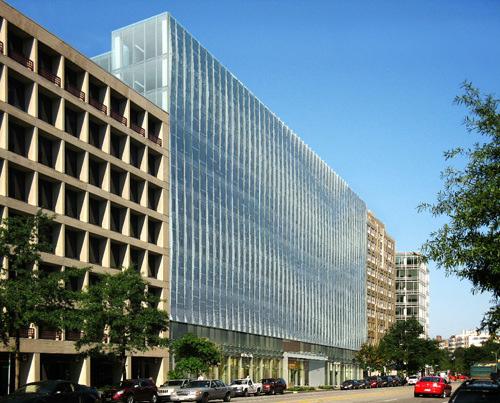Updated: Jan. 26, 2015 at 3:44 p.m.
The University could break ground on its newest construction project by as early as next fall, transforming a portion of Pennsylvania Avenue.
Preparation work is beginning for the 11-story office building, though a date has not been set for demolition of the existing buildings, said University spokesman Kurtis Hiatt. He said the project will last about two and a half years.
And as the construction date looms, the project’s developer will now have to begin the process of selecting tenants to fill the 250,000-square-foot space.
Potential anchoring tenants in the building – which would use “a significant amount of the space” and lure ground-floor retailers – could include law firms or health care companies, said John Katkish, an executive in residence professor at American University.
Katkish said officials should aim to fill at least half of the building by the time construction begins – a signal that the space inside will be in-demand.
“If you can find only 10, 20 or 30 percent, then that’s a sign you may be building the wrong product. What the market demands is key. You don’t want to build a building a market doesn’t want,” Katkish said.
Finding a main tenant for the building will also be a critical step toward filling the 7,000 square feet of street-level retail available, said David Versel, a senior research assistant at George Mason University’s Center for Regional Analysis.
“You won’t get retail on the first floor of an office building if the first floor is vacant. It’s a captive market. The business you get is from the people in the building,” Versel said.
Versel also said filling the office could be a challenge because the office-building boom is happening near NoMa and City Center, leaving the market in the Foggy Bottom neighborhood “weak.”
A high-profile retail tenant, like a luxury restaurant, could attract other businesses to fill the office space of the building, said Christopher Leinberger, the chair of GW’s Center for Real Estate and Urban Analysis.
“It would be a strong development if it had a good, sexy retail anchor that then would be that much more attractive to office users,” he said.
He added that developments like The Avenue, which brings in about $9 million in rent for GW annually, show that office and retail buildings can be “home runs” for the University.
The bulk of the University’s investments are in real estate, which have tripled in the last decade. The investments appreciated $96 million in the last year, totaling $909 million by the end of June, according to financial reports.
GW brought in $151 million in commercial rent last year, according to financial reports.
Credit rating agencies have warned the University against keeping so many investments in real estate because officials can’t abandon them quickly if value drops. Standard & Poor’s called those investments “somewhat risky” and higher than GW’s peers in a report that came out last summer.
Skanska USA, the company GW has picked to develop the site, declined to comment. The last of the restaurants on the site, Mehran and Panda Cafe, vacated their spots in the fall.
Eva Palmer contributed reporting.
This post was updated to reflect the following correction:
The Hatchet incorrectly reported that GW officials would select tenants for the building. Skanska USA, the company that the University selected to develop the site, will choose the tenants. We regret this error.







